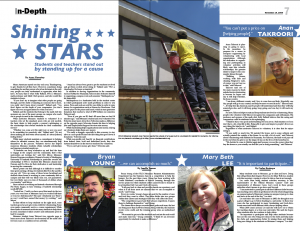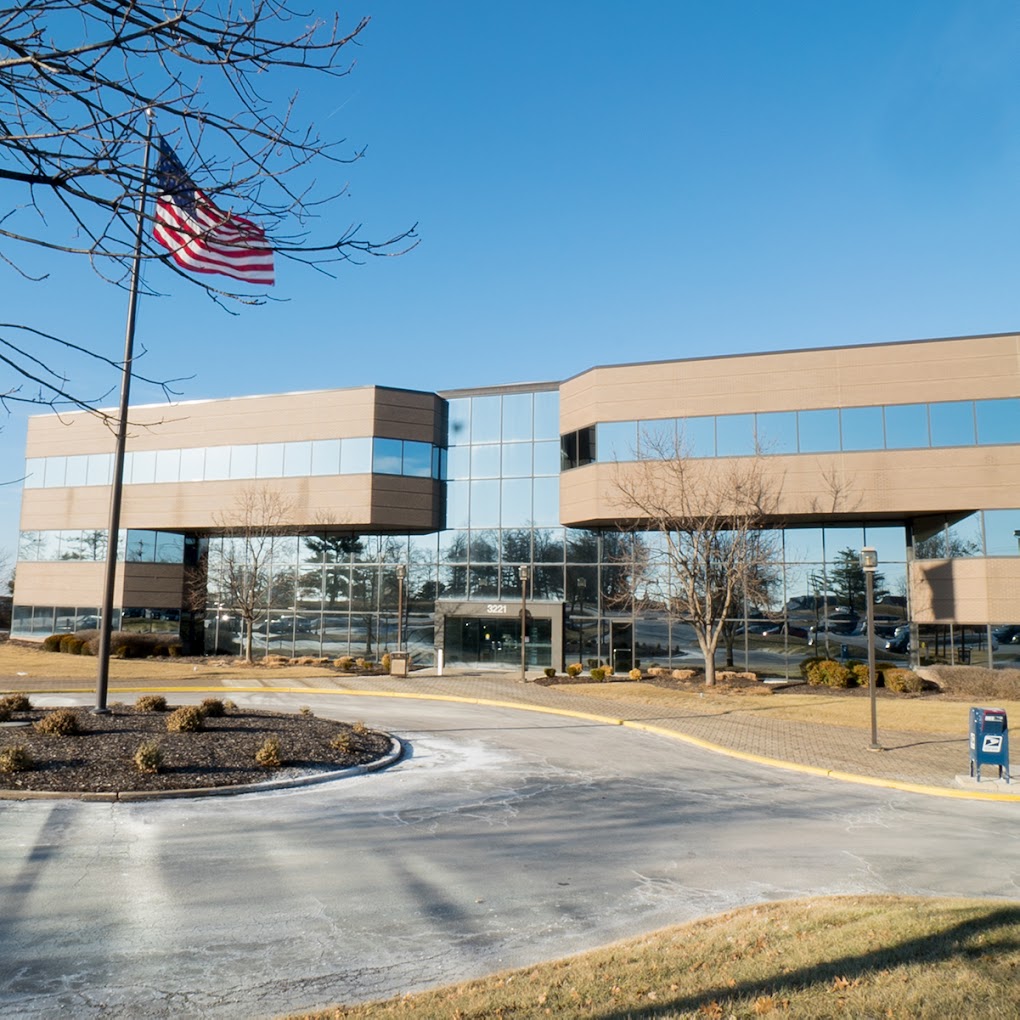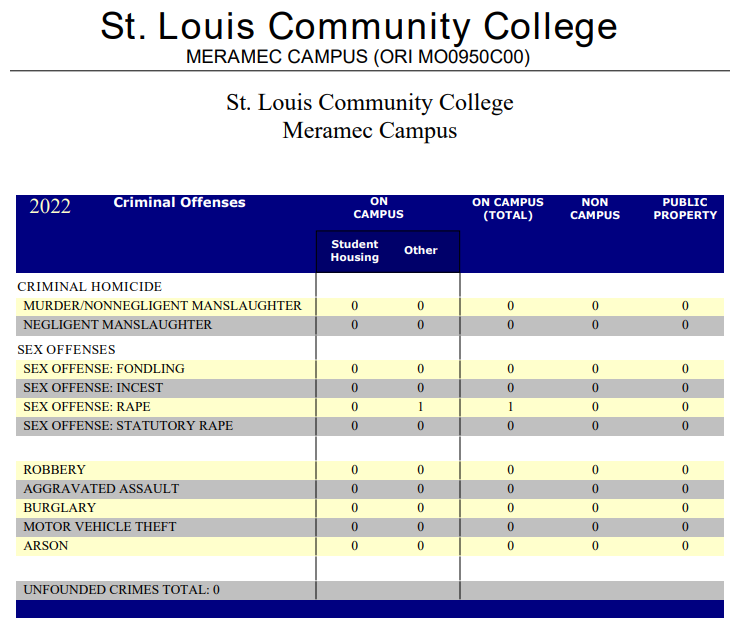Students and teachers stand out by standing up for a cause
 By Anna Nowotny
By Anna Nowotny
– InDepth Editor –
Many Americans spend one day each year, Thanksgiving, to give thanks for all they have. However, sometimes doing something for another person who is less fortunate is the only way people can truly understand or appreciate what they have. At least, that is what Kelly Ballard, STLCC-Meramec math professor and Math Club sponsor, said she would like students to know.
“If you don’t try to imagine what other people are going through, and the cliché of standing in someone else’s shoes, you really don’t learn about yourself,” Ballard said. “You don’t figure out the depth of your compassion. You don’t figure out even an appreciation for what you have.”
Ballard and the students that belong to the math club she sponsors are one of the many groups on campus who reach out to people in need in the community.
What motivates Meramec students to volunteer? Is it teachers who set the standard, peers who are role models, the basic desire to help people, a person’s upbringing or the scholarships that reward students for their community service?
“Whether you come at it the right way or not, you need to do something for somebody else,” Ballard said. “It’s not about making me feel better about myself, it’s about [others] feeling better.”
While many students maintain a commitment to helping others for altruistic reasons, they can simultaneously help themselves in the process. Volunteer service has helped numerous Meramec students obtain valuable scholarships and impress potential employers.
“If students can keep academics up and find the time to engage in the campus and the community, that’s what universities are looking for,” said Eric Meyer, Meramec Honors Program coordinator. Women’s Society of Washington University’s Danforth Scholarship in particular awards full scholarships to STLCC students like Meramec alumni Jack Duncan and Eve Ilves for their dedication to and leadership in serving the community.
Meyer points out that although it is difficult to sacrifice time spent earning a living, for students like Ilves the sacrifice can pay off. “Give up some of those hours [working] and dedicate those hours to working in your community and on campus and that will very likely earn you, not guaranteed, but very likely earn you tens of thousands of dollars when you transfer,” said Meyer.
Ilves cut back on working and instead volunteered through Phi Theta Kappa, in turn winning a Danforth scholarship worth $87,000.
“I asked her, ‘Could you have saved that much in the two years you were here at Meramec had you worked full-time or even two full-time jobs?’ She said, ‘Absolutely not. There’s no way I could have earned that money by working,’” said Meyer.
In their efforts to keep students on the right track, some teachers go so far as to give extra credit for volunteering. Some even make community service a course requirement. While these kinds of measures motivate many students to help those in need, sometimes it takes creative and enthusiastic peers to lead by example.
Meramec student Anan Takroori (see opposite page to learn more about Takroori’s involvement) led the math club for four years on countless service activities.
“Anan has always been great to get the students involved and get them excited about doing it,” Ballard said. “He’s a cheerleader. He keeps us inspired.”
In addition to serving organizations in the community such as Habitat for Humanity, Takroori also dedicates himself to organizing a campus event each semester, “Mathapalooza,” his brainchild.
Mathapalooza is a fundraiser held in the student center in which participants solve math problems in order to win prizes. Pizza and soda are sold for one dollar in order to raise money for organizations such as Nurses for Newborns. Club money pays for the prizes and lunch, which in turn generates donations that reached a total of $390 dollars one semester, Takroori said.
“Even if you give us $5, that’s $5 more than we had 10 minutes ago,” said Meramec student and avid volunteer Pete Schweiss (read more about how Schweiss makes a difference on the opposite page). Schweiss donates his time to helping Jobs and Employment Support Services raise money.
While fundraising helps organizations raise money, relying on volunteers helps them save money.
“It’s really a struggle, especially in this economy, to stay alive as a non-profit because the first thing that goes down is donations,” Schweiss said.
While non-profits rely heavily on financial contributions from federal, state, local and individual levels, they also sustain themselves on the services rendered by volunteers.
“If you can’t give money, give time,” Schweiss said.











